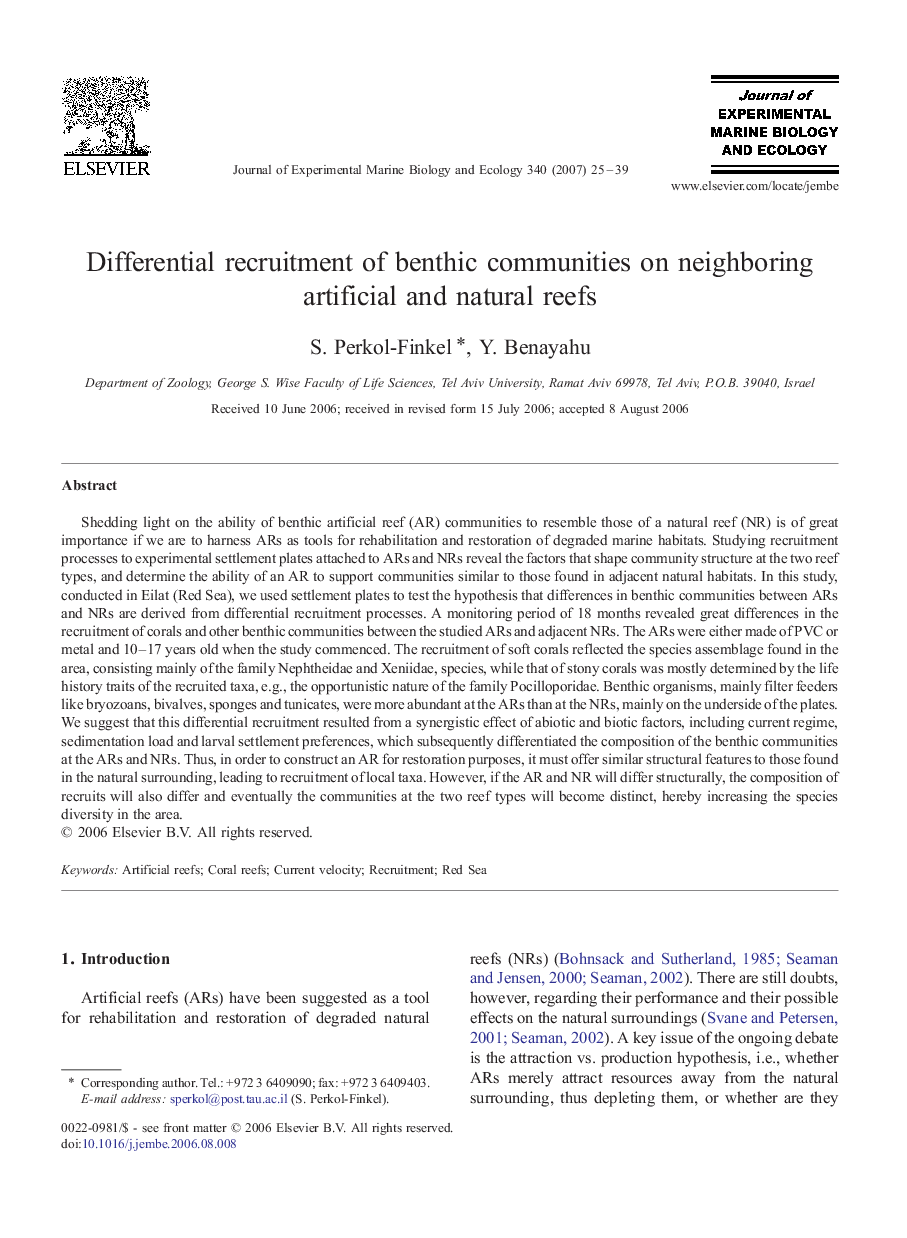| Article ID | Journal | Published Year | Pages | File Type |
|---|---|---|---|---|
| 4397935 | Journal of Experimental Marine Biology and Ecology | 2007 | 15 Pages |
Shedding light on the ability of benthic artificial reef (AR) communities to resemble those of a natural reef (NR) is of great importance if we are to harness ARs as tools for rehabilitation and restoration of degraded marine habitats. Studying recruitment processes to experimental settlement plates attached to ARs and NRs reveal the factors that shape community structure at the two reef types, and determine the ability of an AR to support communities similar to those found in adjacent natural habitats. In this study, conducted in Eilat (Red Sea), we used settlement plates to test the hypothesis that differences in benthic communities between ARs and NRs are derived from differential recruitment processes. A monitoring period of 18 months revealed great differences in the recruitment of corals and other benthic communities between the studied ARs and adjacent NRs. The ARs were either made of PVC or metal and 10–17 years old when the study commenced. The recruitment of soft corals reflected the species assemblage found in the area, consisting mainly of the family Nephtheidae and Xeniidae, species, while that of stony corals was mostly determined by the life history traits of the recruited taxa, e.g., the opportunistic nature of the family Pocilloporidae. Benthic organisms, mainly filter feeders like bryozoans, bivalves, sponges and tunicates, were more abundant at the ARs than at the NRs, mainly on the underside of the plates. We suggest that this differential recruitment resulted from a synergistic effect of abiotic and biotic factors, including current regime, sedimentation load and larval settlement preferences, which subsequently differentiated the composition of the benthic communities at the ARs and NRs. Thus, in order to construct an AR for restoration purposes, it must offer similar structural features to those found in the natural surrounding, leading to recruitment of local taxa. However, if the AR and NR will differ structurally, the composition of recruits will also differ and eventually the communities at the two reef types will become distinct, hereby increasing the species diversity in the area.
